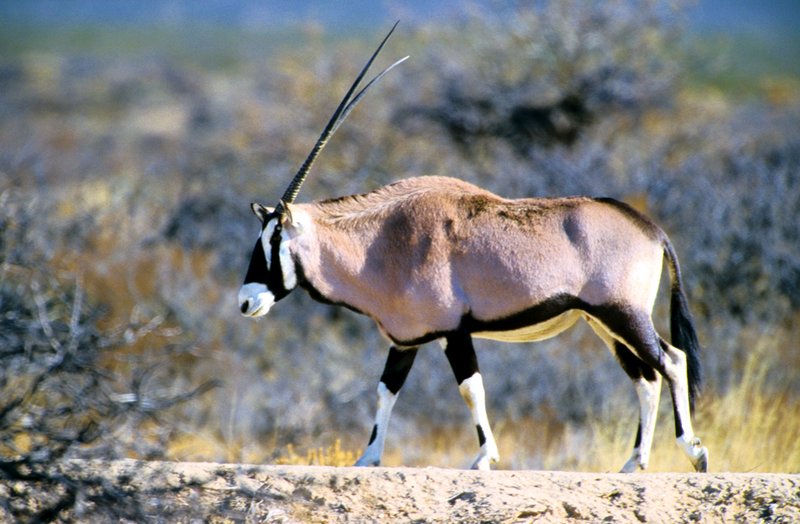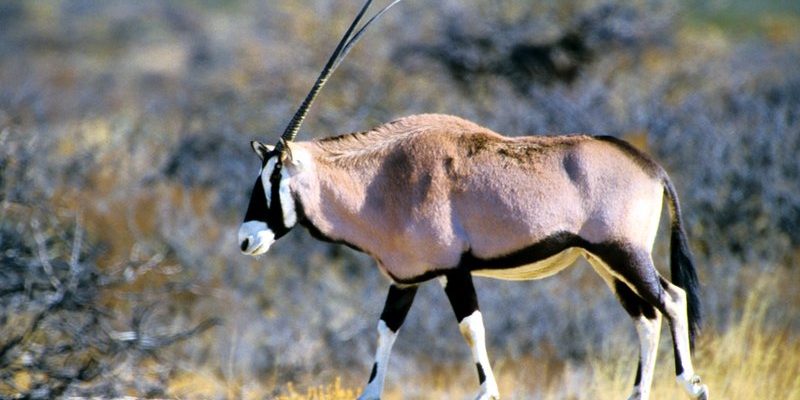
Oryxes, particularly the gemsbok oryx, are remarkable not just for their striking appearance but also for their adaptability in the wild. They navigate the challenges of their environment using efficient strategies for both diet and hunting, which can often resemble a masterclass in survival. Honestly, understanding how these animals eat and hunt can give us insights into their behaviors and the ecosystems they inhabit. So, grab your favorite drink, and let’s take a closer look at the oryx’s diet and hunting strategies.
Understanding the Oryx’s Diet
The oryx is primarily a herbivore, which means their diet mainly consists of plant material. These animals are designed to survive in the harshest desert climates where food sources can be scarce. Their diet includes a mix of grasses, leaves, and shoots. You might be wondering how they manage to find enough food in such dry and dusty places. Well, they have a few tricks up their hooves!
First off, oryxes are great foragers. They can browse on vegetation that other animals might find unpalatable. For instance, they’ll munch on the tough, spiky plants that grow in their environment. This ability not only helps them survive but also plays a crucial role in maintaining the balance of their ecosystem by controlling plant growth.
Moreover, oryxes have adapted to be very efficient in extracting moisture from their food. In fact, they often get most of the water they need from the plants they consume. This means they can go long periods without directly drinking water, which is essential for survival in the desert. It’s like they’ve mastered the art of hydration through cuisine!
Water Conservation Techniques
Living in a desert means water is often more valuable than gold. Oryxes have developed impressive strategies for conserving water. For starters, they have long legs and a unique physiology that enables them to regulate body temperature effectively. This can prevent dehydration by minimizing water loss.
Here’s the thing: oryxes can lower their body temperature during the hottest parts of the day. They do this by allowing their body temperature to rise slightly, trapping heat until it cools down at night. This clever trick means they sweat less and save more water. It’s a bit like wearing a cozy jacket on a chilly night—you stay warm without losing those precious resources.
Additionally, these animals have evolved to have very efficient kidneys, which concentrate urine and minimize water loss. When you think about it, every drop counts in their world. This all helps them thrive in an environment that seems inhospitable at first glance.
Hunting Strategies: More Than Just Prey
You might be surprised to learn that while oryxes are primarily herbivores, they’re also known to exhibit some hunting strategies, especially when it comes to their surroundings. They observe other animals and their behaviors, which can sometimes lead them to prey on smaller creatures like insects or small rodents when the opportunity arises.
However, their primary strategy is to avoid becoming prey themselves. With their long, sharp horns, oryxes can defend themselves against predators like lions or hyenas. They’re not just passive creatures waiting for danger; instead, they’re quite proactive. Their strong herd mentality means they often move in groups, making it harder for predators to single out an individual.
When in danger, they can put on an impressive display, charging at threats with surprising speed. Observing an oryx defend itself can be reminiscent of a carefully choreographed dance, showcasing not only their agility but their strong bond with other herd members.
Foraging Behavior and Competition
Foraging can turn into a competitive sport in the wild. Oryxes often share their habitat with other herbivores, which means they need to be clever about finding food. They’ll frequently switch to different areas to avoid depleting resources too quickly. This behavior ensures they have a steady supply of food year-round.
In some cases, oryxes may even work together to push other animals away from food sources. Picture a group of friends sharing a pizza—they’re not just going to let others take slices without a little friendly competition! This kind of social behavior is vital for their survival and emphasizes the need for cooperation in a challenging environment.
The Role of Habitat in Diet and Hunting
The type of habitat where oryxes live greatly influences their diet and hunting strategies. These animals are primarily found in the hot, arid regions of Africa and the Middle East. In these locations, the availability of forageable plants changes throughout the year, affecting their eating habits.
Seasonal changes can lead the oryx to travel long distances in search of food. Think of it like planning a road trip: you have to know where the rest stops are! Oryxes are adept at navigating their landscapes, often returning to locations that yield good resources during certain times of the year.
This migratory behavior is essential, as it allows oryxes to adapt to fluctuations in plant growth due to seasonal rains or droughts. Their survival hinges on understanding their environment, much like a skilled explorer charting the best paths through uncharted territories.
The Impact of Human Activity
Sadly, human activity has had a significant impact on the oryx’s diet and hunting strategies. As development spreads, natural habitats are being destroyed, which limits the food sources available to these remarkable animals. Urbanization, agriculture, and climate change all play a role in reducing the areas where oryxes can roam and find sustenance.
Conservation efforts are essential to ensuring that oryx populations thrive. Protected areas and wildlife reserves can help maintain habitats where oryxes can find food and avoid the threats that come with human encroachment. It’s vital to remember that with every step we take in development, we need to consider the creatures that share our planet.
The diet and hunting strategies of the oryx are a testament to the resilience and adaptability of nature. These incredible animals have developed unique ways to thrive in some of the most challenging environments on earth. From their efficient foraging techniques to their impressive water conservation methods, oryxes demonstrate the beauty of survival in the wild.
As we continue to learn more about these fascinating creatures, it becomes clear that our responsibility extends beyond our own needs. By protecting their habitats and respecting the delicate balance of ecosystems, we not only help ensure the survival of the oryx but also preserve the diversity of life on our planet. So the next time you think about desert life, remember the oryx—an emblem of endurance, adaptation, and the intricate web of life that connects us all.

